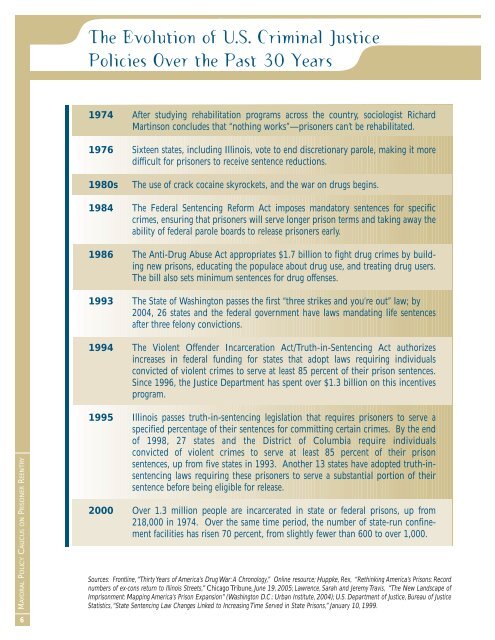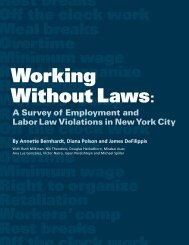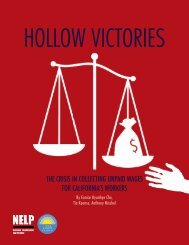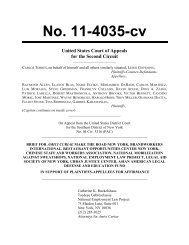Rebuilding Lives. Strengthening Communities.
Rebuilding Lives. Strengthening Communities.
Rebuilding Lives. Strengthening Communities.
You also want an ePaper? Increase the reach of your titles
YUMPU automatically turns print PDFs into web optimized ePapers that Google loves.
The Evolution of U.S. Criminal Justice<br />
Policies Over the Past 30 Years<br />
1974 After studying rehabilitation programs across the country, sociologist Richard<br />
Martinson concludes that “nothing works”—prisoners can’t be rehabilitated.<br />
1976 Sixteen states, including Illinois, vote to end discretionary parole, making it more<br />
difficult for prisoners to receive sentence reductions.<br />
1980s<br />
The use of crack cocaine skyrockets, and the war on drugs begins.<br />
1984 The Federal Sentencing Reform Act imposes mandatory sentences for specific<br />
crimes, ensuring that prisoners will serve longer prison terms and taking away the<br />
ability of federal parole boards to release prisoners early.<br />
1986 The Anti-Drug Abuse Act appropriates $1.7 billion to fight drug crimes by building<br />
new prisons, educating the populace about drug use, and treating drug users.<br />
The bill also sets minimum sentences for drug offenses.<br />
1993 The State of Washington passes the first “three strikes and you’re out” law; by<br />
2004, 26 states and the federal government have laws mandating life sentences<br />
after three felony convictions.<br />
1994 The Violent Offender Incarceration Act/Truth-in-Sentencing Act authorizes<br />
increases in federal funding for states that adopt laws requiring individuals<br />
convicted of violent crimes to serve at least 85 percent of their prison sentences.<br />
Since 1996, the Justice Department has spent over $1.3 billion on this incentives<br />
program.<br />
MAYORAL POLICY CAUCUS ON PRISONER REENTRY<br />
1995 Illinois passes truth-in-sentencing legislation that requires prisoners to serve a<br />
specified percentage of their sentences for committing certain crimes. By the end<br />
of 1998, 27 states and the District of Columbia require individuals<br />
convicted of violent crimes to serve at least 85 percent of their prison<br />
sentences, up from five states in 1993. Another 13 states have adopted truth-insentencing<br />
laws requiring these prisoners to serve a substantial portion of their<br />
sentence before being eligible for release.<br />
2000 Over 1.3 million people are incarcerated in state or federal prisons, up from<br />
218,000 in 1974. Over the same time period, the number of state-run confinement<br />
facilities has risen 70 percent, from slightly fewer than 600 to over 1,000.<br />
Sources: Frontline,“Thirty Years of America’s Drug War:A Chronology,” Online resource; Huppke, Rex, “Rethinking America’s Prisons: Record<br />
numbers of ex-cons return to Illinois Streets,” Chicago Tribune, June 19, 2005; Lawrence, Sarah and Jeremy Travis, “The New Landscape of<br />
Imprisonment: Mapping America’s Prison Expansion” (Washington D.C.: Urban Institute, 2004); U.S. Department of Justice, Bureau of Justice<br />
Statistics,“State Sentencing Law Changes Linked to Increasing Time Served in State Prisons,” January 10, 1999.<br />
6
















